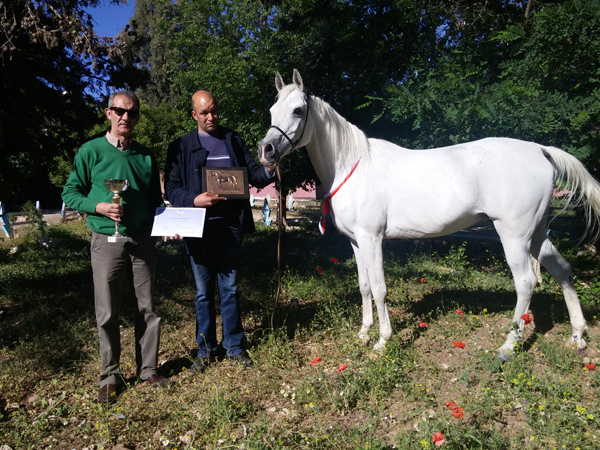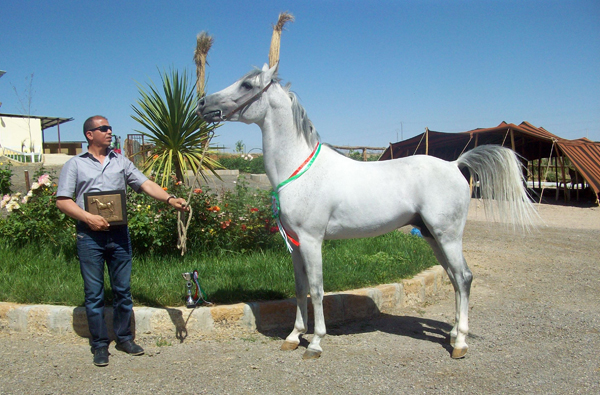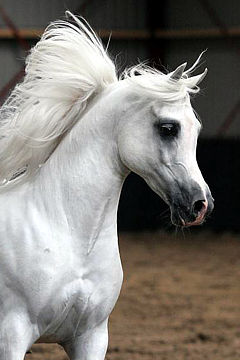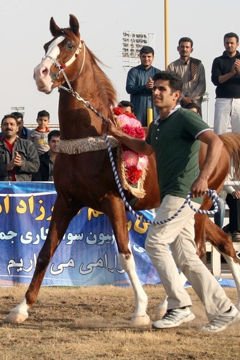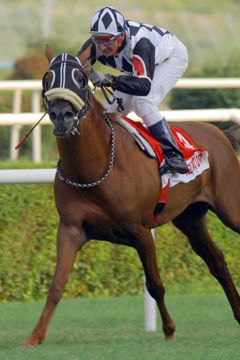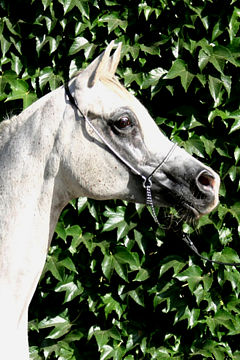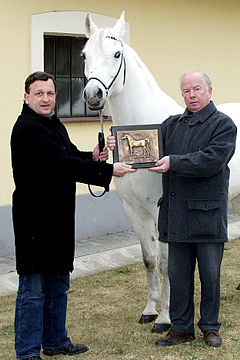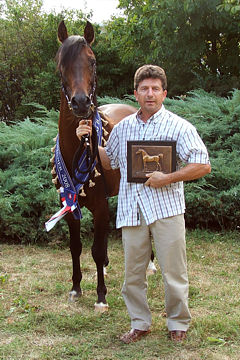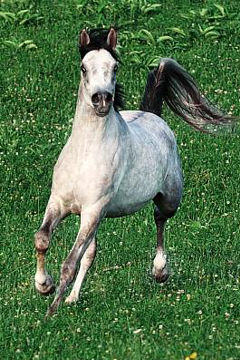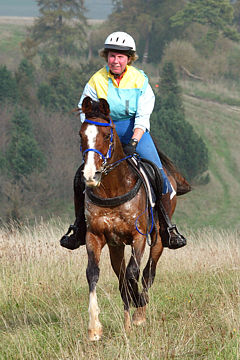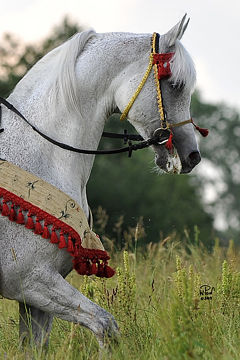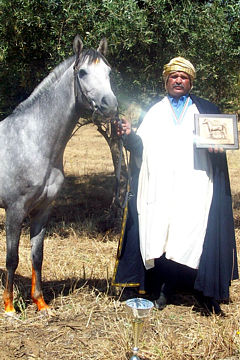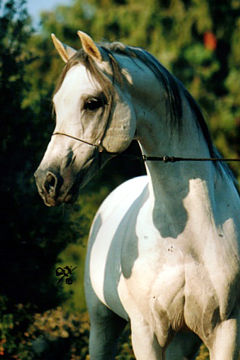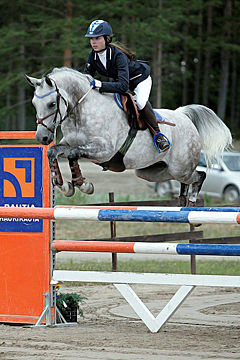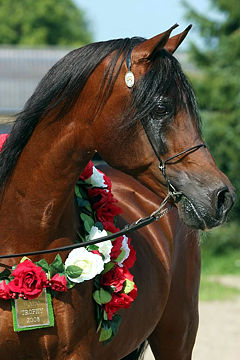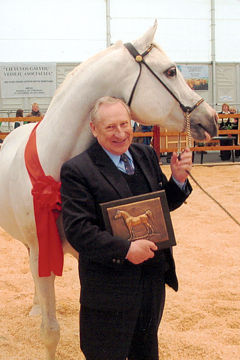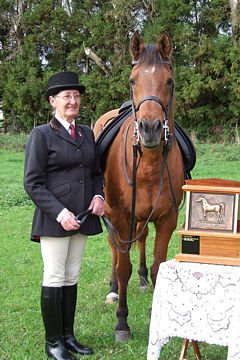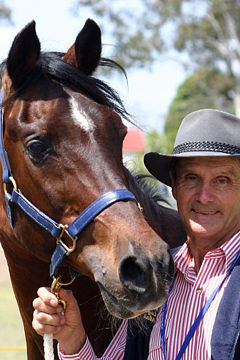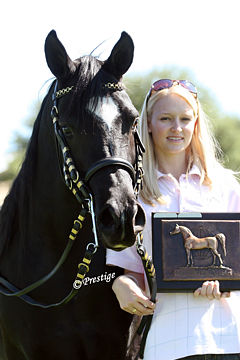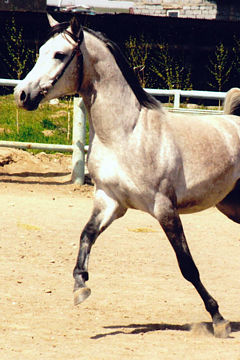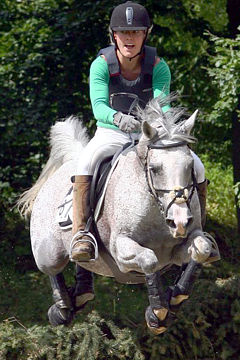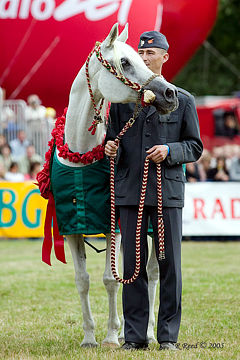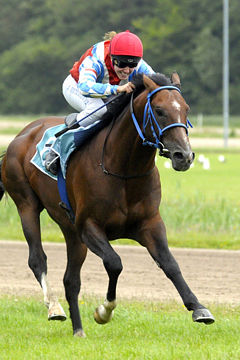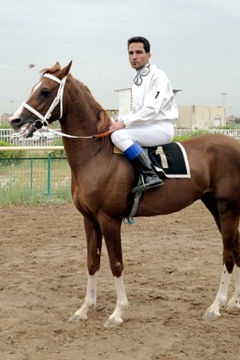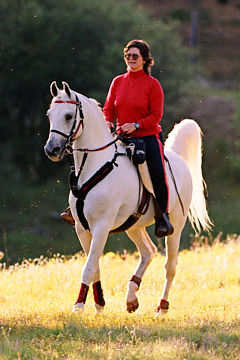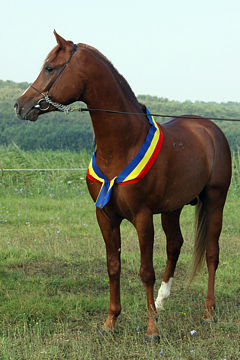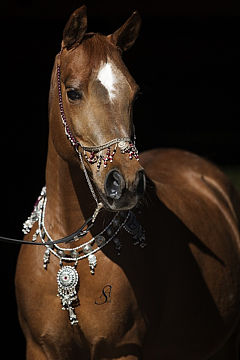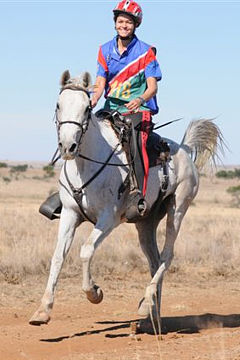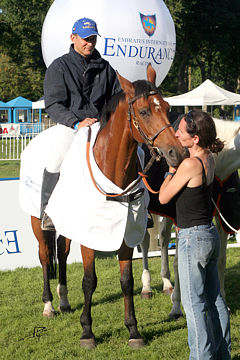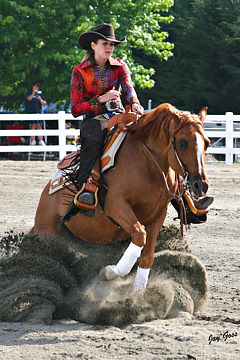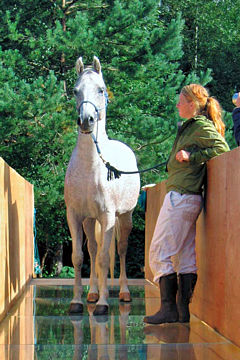![]()
Member Report from Algeria
REPORT MADE AT 2017 WAHO CONFERENCE:
Ahmed Bouakkaz, Algeria: (Translated from French). Mr. Vice-President, Members of the Executive Committee, ladies and gentlemen. I wish to thank the Kingdom of Bahrain and also the organizers of this event for their hospitality. My name is Ahmed Bouakkaz, I am the Head of the Studbook Department at ONDEEC (National Office for Development of Equine and Camelid Breeding). I am accompanied by Mr. Mahi Hadj, representing the private breeders in Algeria.
The Arabian horse was introduced into Algeria in the 18th century, to the Jumenterie de Tiaret. These first imports from the Orient were breeding stock of great quality, including outstanding stallions such as Bango & Masbout. The second wave of imports took place in 1978, new lines were introduced with the aim of renewing the herd by injecting new bloodlines. For a long time, the Algerian State through the “Jumenterie de Tiaret”’ was the sole owner and breeder of Arabian horses, but in the 1980s the private sector began to participate in breeding. Facilities were granted to them, such as registration of births, the accreditation of quality standards, and incentive awards.
Here are some figures for the year 2016: We registered 194 foals; 326 mares were used for breeding, and there were 68 breeding stallions. Five volumes of our stud-books have been published and distributed, volume 6 will appear this year, we are just waiting for the final results of the parent verifications by DNA. We microchip all purebred Arabian foals. Regarding imports in 2016: Two horses were imported by private breeders, intended primarily for racing. There were no exported horses. Natural cover is at present the main breeding method used in Algeria, although some breeders have imported semen for artificial insemination. Artificial Insemination, semen transport and embryo transfer are being studied at specialized centres, notably the National Center for Artificial Insemination and Genetics (CNIAG).
Arabian horses are registered at the ONDEEC office in Tiaret, the Registry is managed specifically for this purpose of maintaining the Algerian stud-book, which was originally created by presidential decree. Each registered horse is issued with a passport, and a registration card which constitutes the certificate of ownership.
The Arabian horse in Algeria is mainly used for flat racing, run by the Society of Horse Races and Pari Mutuel (SCHPM), the number of races is 300 per year. It is also used to a lesser extent in endurance competitions, which usually take place at the same time as the jumping competitions organized by the Equestrian Federation of Algeria, of which there are 12 national competitions and 6 international competitions. ONDEEC and the Algerian studbook office has also initiated shows specifically for Arabian horses. These shows are regional, and during the “Salon du Cheval de Tiaret”’ held in September of each year the best Arabian horses are awarded with prizes. Our other activities include festivities such as Fantazia and other traditional activities which are organized several times during the year.
As regards the WAHO Trophy, in 2016 it was awarded to the mare Fousha, born in 1999, bred by the Haras Nationaux de Tiaret and owned by Mr Zerguaoui Abed. Thank you for your attention.
REPORT DUE TO BE MADE AT 2011 WAHO CONFERENCE (Unfortunately the Delegate, Mr. Ahmed Bouakkaz, was unable to attend at the last moment. The following report is in French, it would have been translated at the Conference.)
Le présent rapport est établit par l’Office National de Développement des Elevages Equins et Camelins appelé ci-après ONDEEC. Crée en 1986 par décret Présidentiel, Structure chargée de l’élevage équin et gestionnaire du stud-book de toutes les races de chevaux reconnues en Algérie.
Le cheval Arabe a été introduit en Algérie au 19ème siècle, au niveau de la jumenterie de Tiaret. Ce fut les premières importations d’orient avec un cheptel reproducteur de qualité à l’image d’étalons exceptionnels tels que Bango & Masbout. La deuxième vague d’importation a eu lieu en 1978, de nouvelles lignées ont étés introduites avec pour objectif le renouvellement du cheptel en injectant de nouveaux courants de sang. A partir des années 1990, les propriétaires du secteur privé ont commencé à importer des chevaux Arabes destines essentiellement aux courses.
Pendant longtemps, l’état Algérien par le biais de la jumenterie de Tiaret a été le seul détenteur et producteur de chevaux Arabes, mais dans les années 80 le secteur privé a commencé à participer dans l’élevage. Des facilités lui ont étés accordées, comme les primes de naissances, la mise à leurs disposition des étalons, l’agrément des étalons de qualité et les primes de naissance et d’encouragement.
Quelques chiffres pour l’année 2010 : Naissances 123; Saillies 249; Etalons utilisés 40 Import/Export : Seize (16) chevaux ont étés importé par des particuliers destinés essentiellement aux courses. Aucune exportation n’est signalée.
Il est à signaler aussi que les étalons Arabes sont utilisés à produire d’autre races surtout la race Arabe-Barbe très répandue en Algérie, à travers les stations de monte au niveau du territoire national.
Contrôle de filiation : Ayant pris conscience de la nécessité de l’utilisation de techniques nouvelles pour l’identification et l’authentification de l’ascendance de chaque cheval, l’ONDEEC de par son rôle de gestionnaire de l’élevage équin en Algérie, a mis sur pied une commission nationale dont la mission principale est l’opération de prélèvements aux fins d’identification (ou génotype) et de contrôle de filiation par ADN, cette opération a nécessité du temps et des moyens humains et techniques à cause des conditions géographiques difficiles (le territoire Algérien étant l’un des plus vastes en Afrique), les régions des reliefs intérieurs qui s’étendent d’est en ouest sont les plus sollicités par les éleveurs à pratiquer l’élevage du cheval Arabe.
Entre 2008 & 2009, 790 chevaux Arabes ont étés contrôlés, ce nombre concerne tous les chevaux Arabes vivants, nés jusqu’en 2007. S’ensuivit en 2010 une deuxième vague et qui concerne ceux nés entre 2008 & 2009. Ainsi, aucun cheval Arabe ne peut être inscrit au stud-book Algérien sans qu’il ne soit contrôlé par ADN, et par voie de conséquence il ne peut en aucun cas pratiquer une activité quelconque.
La puce électronique (micro-chip system) : introduit en 2001 les chevaux Arabes sont dotés de cette dernière jusqu’aux naissances 2008.
Techniques de reproduction : La seule technique de reproduction utilisée en Algérie reste la monte naturelle. L’insémination artificielle, le transport de semences et transfert d’embryon sont à l’étude au niveau de structures spécialisées notamment le Centre National de l’Insémination Artificielle et Génétique (CNIAG). Enregistrement des naissances : Les chevaux Arabes sont immatriculés au niveau de l’ONDEEC dans un registre ouvert à cet effet et qui constitue le stud-book Algérien (crée par décret présidentiel). L’étude de l’introduction d’une base de données (informatique) est en cours. Chaque cheval est doté d’un livret signalétique qui constitue aussi un passeport, une carte d’immatriculation est aussi délivrée et qui constitue un acte de propriété.
Utilisation : Le cheval Arabe est utilisé essentiellement au niveau des courses gérées par la Société des Courses Hippiques et du Pari Mutuel (SCHPM), le nombre de courses s’élève à 300 par an. Il est aussi utilisé à un moindre degré dans les concours d’endurance et qui ont lieu en général en même temps que les concours d’obstacles gérés par la Fédération Equestre Algérienne. Les concours de modèle et allure et les horse shows sont le sujet de réflexion pour les développer et les insérer dans les activités équestres.
En 2010 la dotation du trophée a été dédiée à un cheval de courses son propriétaire a été honoré et sa photo envoyée à l’Organisation Mondiale du Cheval Arabe (WAHO). Nous tenons à signaler la pertinence de cette action ‘’WAHO Trophy’’ qui est une des voies à développer l’élevage du cheval Arabe dans le monde. Aussi, nous soutenons vivement ce genre d’initiatives.
L’ONDEEC adresse ces chaleureuses amitiés à tous les pays membres de la WAHO, ainsi que Monsieur le Président et les membres du comité éxecutif de la WAHO.
Report made at the 2009 WAHO Conference
I am Mrs. Faiza Benmorsli, Head of the Breeding and Information Department at the National Office for the Development of Equine Breeding of Algeria.
I would like to inform you that Algeria produced its first stud book in 1991, this covered the horses born from 1923 to 1991. Volume 2 covers those born up to 1995, Volume 3 those born up to 2000 and our Volume 4 is currently being finalised and will be submitted for checking and approval before printing.
The National Office for the Development of Equine Breeding imposes strict and rigorous rules of control for production and registration both for the state and the private stud farms. We have already commenced microchipping for more than 600 horses, in particular the racehorses. DNA typing has also been established, so far we have DNA typed more than 770 horses in order to improve all the controls of parent verification and identification. We estimate that there are approximately 1,000 living purebred Arabian horses in Algeria. The purebred Arabian foals are now all parent verified by DNA and in future all equines in Algeria will also be DNA typed and microchipped.
The number of foals registered annually is approximately 110. Our purebred Arabian horses in Algeria are used mainly for racing and endurance, and also for breeding. Also, we hold regular horse shows and classes for Arabians notably at our annual Salon Du Cheval, which is for all breeds. Thank you for your kind attention.

